Abstract
Salmonella typhimurium was adapted to acid by exposure to hydrochloric acid at pH 5.8 for one to two doublings. Acid-adapted cells had increased resistance to inactivation by organic acids commonly present in cheese, including lactic, propionic, and acetic acids. Recovery of cells during the treatment with organic acids was increased 1,000-fold by inclusion of 0.1% sodium pyruvate in the recovery medium. Acid-adapted S. typhimurium cells survived better than nonadapted cells during a milk fermentation by a lactic acid culture. Acid-adapted cells also showed enhanced survival over a period of two months in cheddar, Swiss, and mozzarella cheeses kept at 5 degrees C. Acid adaptation was found in Salmonella spp., including Salmonella enteritidis, Salmonella choleraesuis subsp. choleraesuis serotype heidelberg, and Salmonella choleraesuis subsp. choleraesuis serotype javiana, associated with food poisoning. These observations support the theory that acid adaptation is an important survival mechanism enabling Salmonella spp. to persist in fermented dairy products and possibly other acidic food products.
Full text
PDF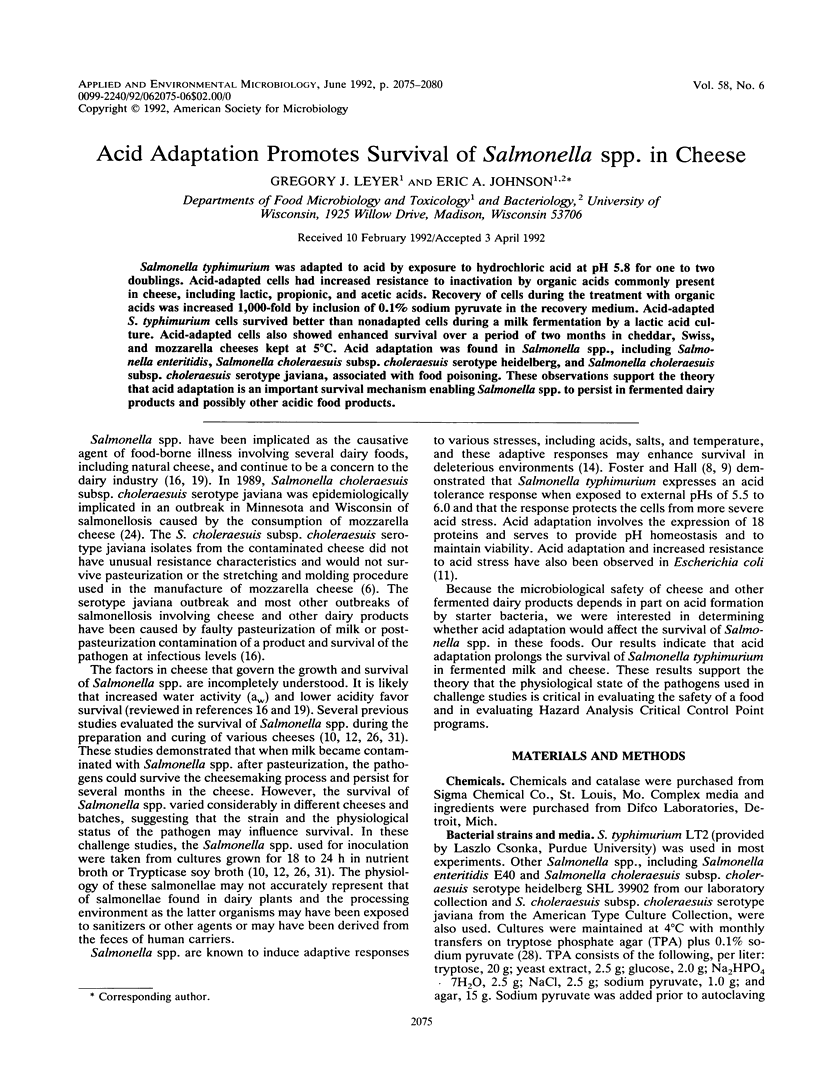
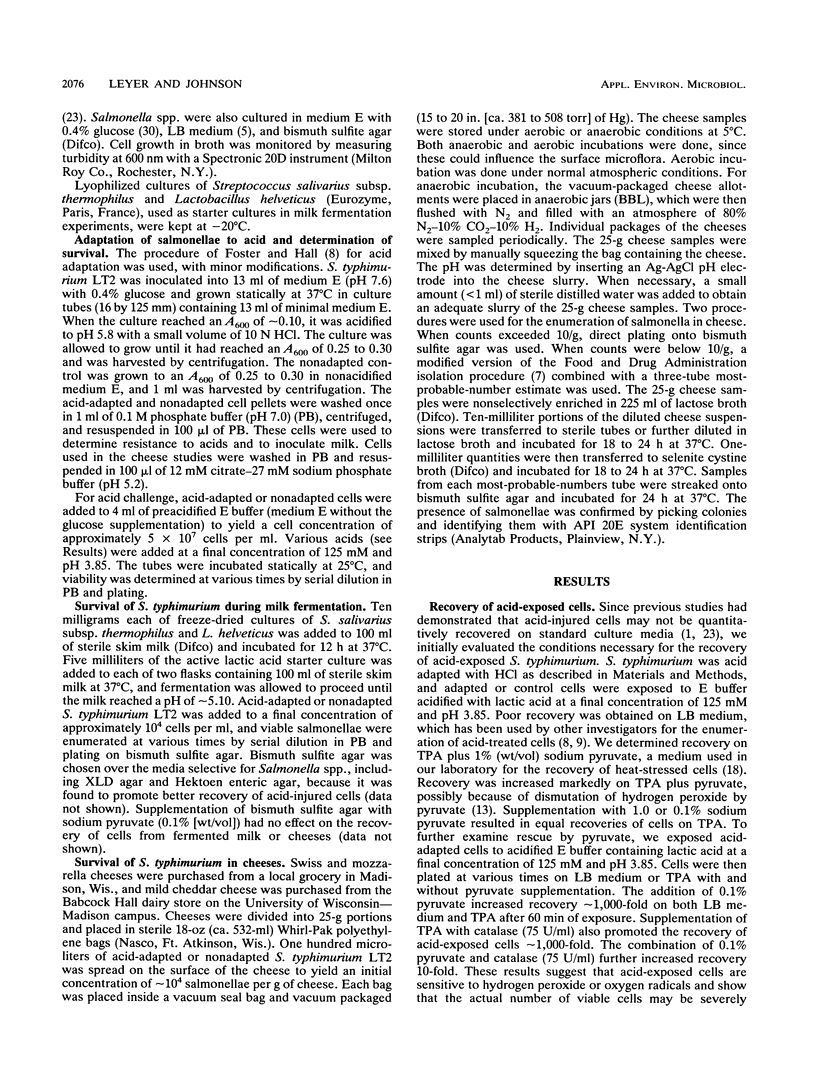
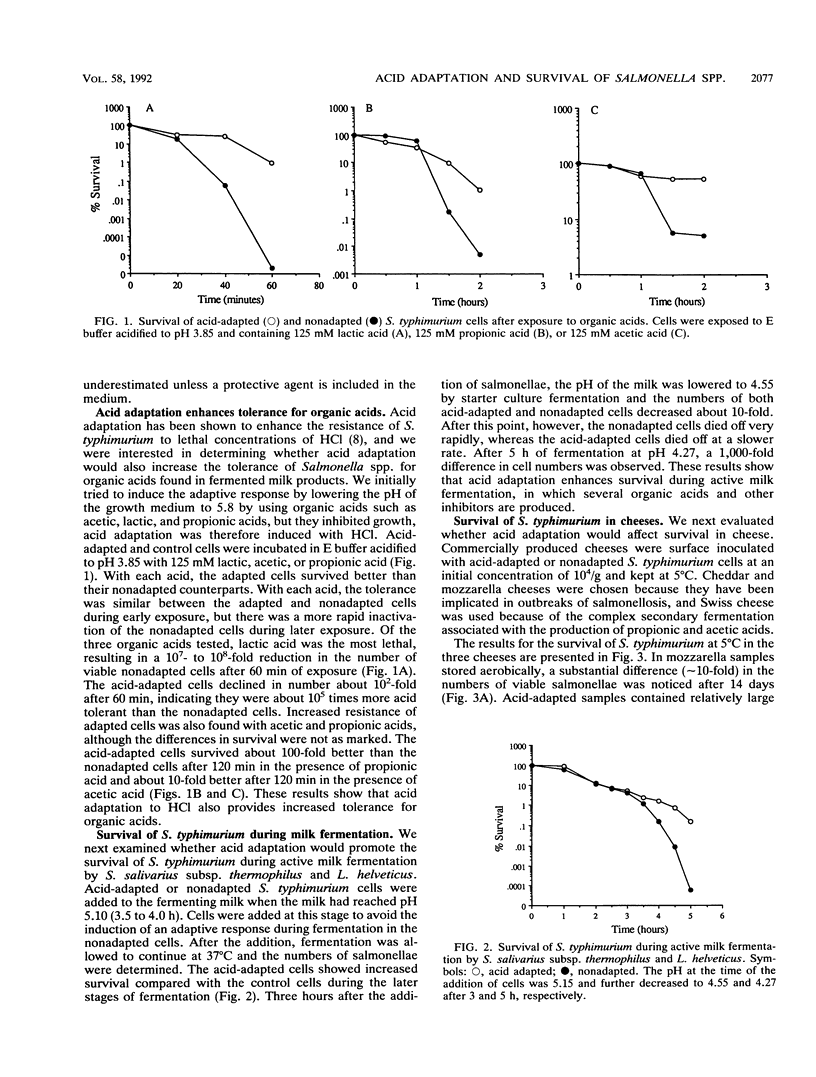
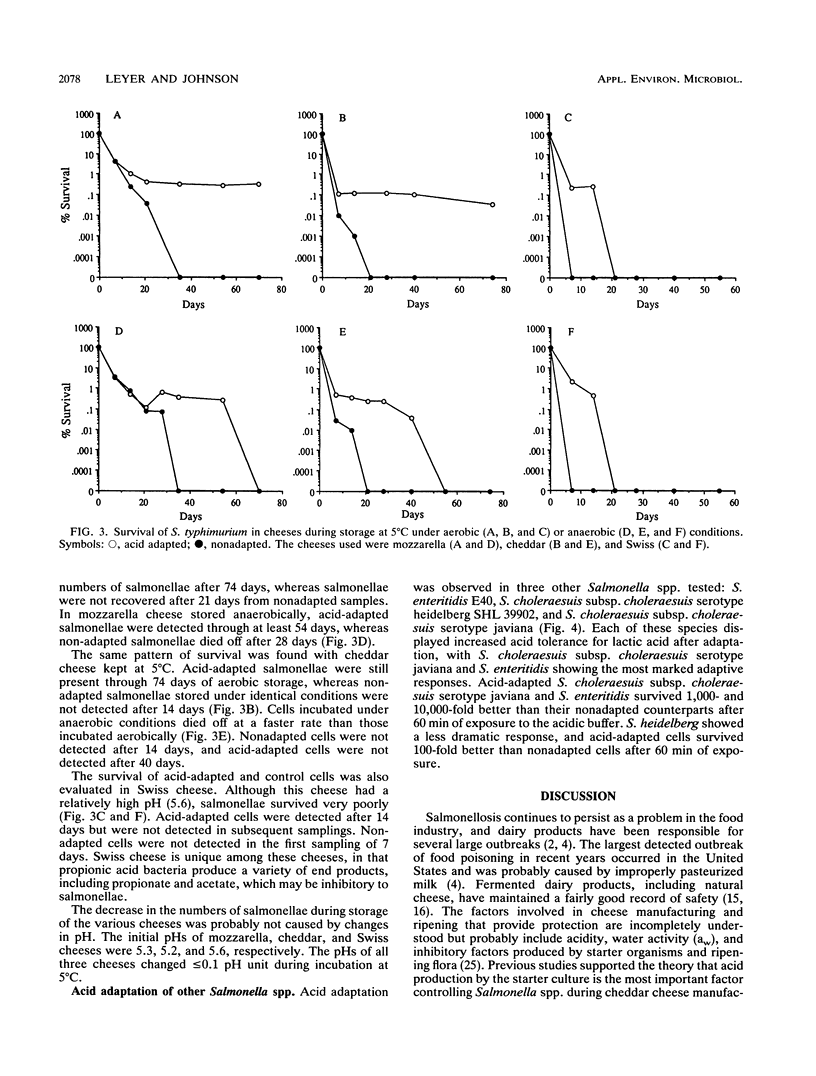
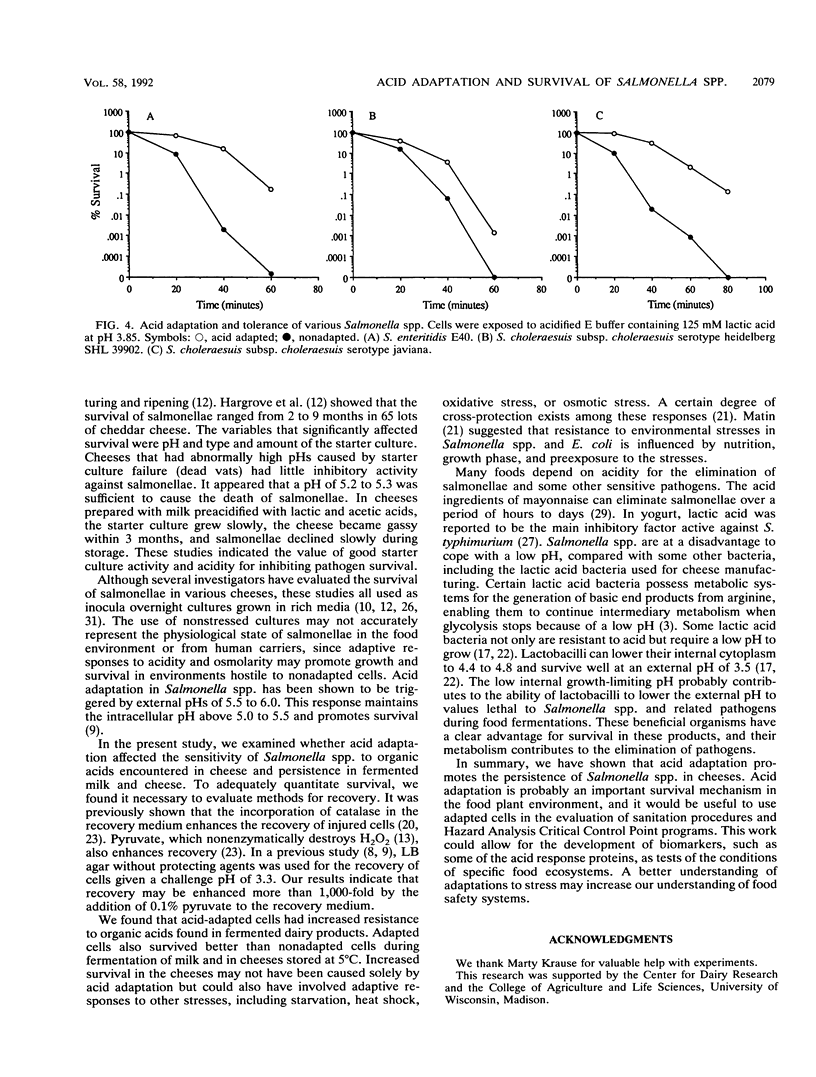
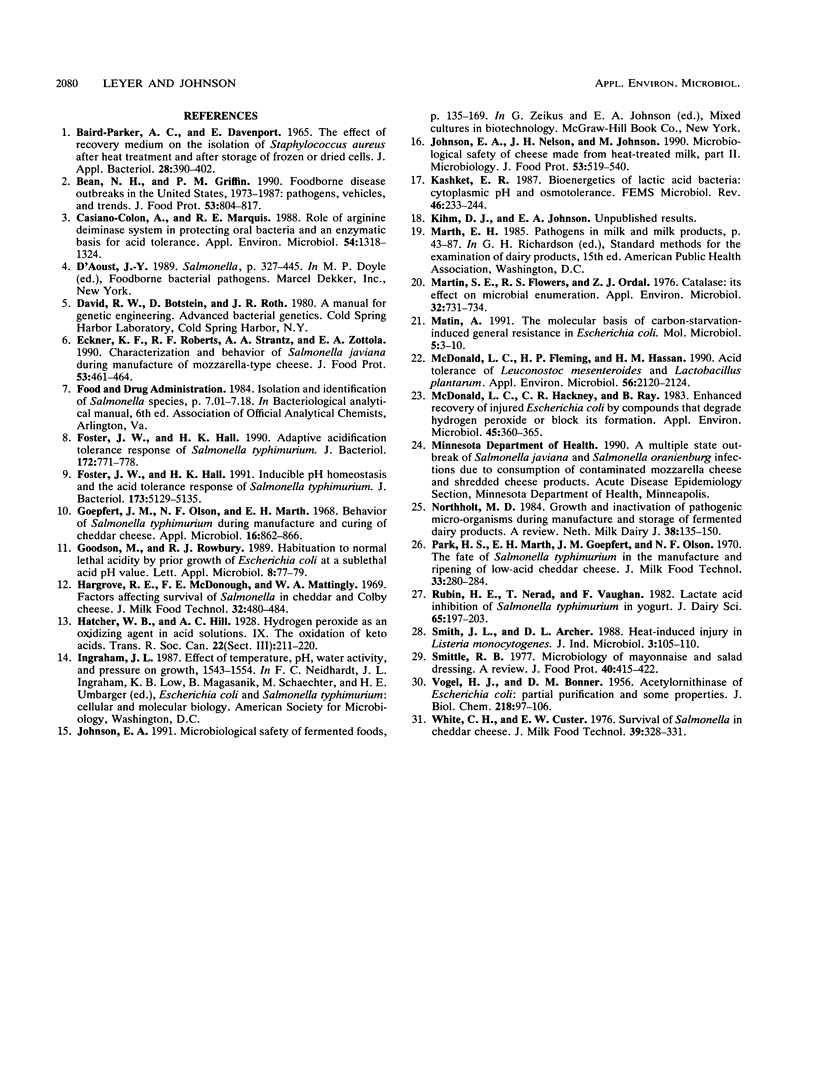
Selected References
These references are in PubMed. This may not be the complete list of references from this article.
- Bairdparker A. C., Davenport E. The effect of recovery medium on the isolation of Staphylococcus aureus after heat treatment and after the storage of frozen or dried cells. J Appl Bacteriol. 1965 Dec;28(3):390–402. doi: 10.1111/j.1365-2672.1965.tb02169.x. [DOI] [PubMed] [Google Scholar]
- Casiano-Colón A., Marquis R. E. Role of the arginine deiminase system in protecting oral bacteria and an enzymatic basis for acid tolerance. Appl Environ Microbiol. 1988 Jun;54(6):1318–1324. doi: 10.1128/aem.54.6.1318-1324.1988. [DOI] [PMC free article] [PubMed] [Google Scholar]
- Foster J. W., Hall H. K. Adaptive acidification tolerance response of Salmonella typhimurium. J Bacteriol. 1990 Feb;172(2):771–778. doi: 10.1128/jb.172.2.771-778.1990. [DOI] [PMC free article] [PubMed] [Google Scholar]
- Foster J. W., Hall H. K. Inducible pH homeostasis and the acid tolerance response of Salmonella typhimurium. J Bacteriol. 1991 Aug;173(16):5129–5135. doi: 10.1128/jb.173.16.5129-5135.1991. [DOI] [PMC free article] [PubMed] [Google Scholar]
- Goepfert J. M., Olson N. F., Marth E. H. Behavior of Salmonella typhimurium during manufacture and curing of cheddar cheese. Appl Microbiol. 1968 Jun;16(6):862–866. doi: 10.1128/am.16.6.862-866.1968. [DOI] [PMC free article] [PubMed] [Google Scholar]
- Martin S. E., Flowers R. S., Ordal Z. J. Catalase: its effect on microbial enumeration. Appl Environ Microbiol. 1976 Nov;32(5):731–734. doi: 10.1128/aem.32.5.731-734.1976. [DOI] [PMC free article] [PubMed] [Google Scholar]
- Matin A. The molecular basis of carbon-starvation-induced general resistance in Escherichia coli. Mol Microbiol. 1991 Jan;5(1):3–10. doi: 10.1111/j.1365-2958.1991.tb01819.x. [DOI] [PubMed] [Google Scholar]
- McDonald L. C., Fleming H. P., Hassan H. M. Acid Tolerance of Leuconostoc mesenteroides and Lactobacillus plantarum. Appl Environ Microbiol. 1990 Jul;56(7):2120–2124. doi: 10.1128/aem.56.7.2120-2124.1990. [DOI] [PMC free article] [PubMed] [Google Scholar]
- McDonald L. C., Hackney C. R., Ray B. Enhanced recovery of injured Escherichia coli by compounds that degrade hydrogen peroxide or block its formation. Appl Environ Microbiol. 1983 Feb;45(2):360–365. doi: 10.1128/aem.45.2.360-365.1983. [DOI] [PMC free article] [PubMed] [Google Scholar]
- Rubin H. E., Nerad T., Vaughan F. Lactate acid inhibition of Salmonella typhimurium in yogurt. J Dairy Sci. 1982 Feb;65(2):197–203. doi: 10.3168/jds.S0022-0302(82)82177-2. [DOI] [PubMed] [Google Scholar]
- VOGEL H. J., BONNER D. M. Acetylornithinase of Escherichia coli: partial purification and some properties. J Biol Chem. 1956 Jan;218(1):97–106. [PubMed] [Google Scholar]


